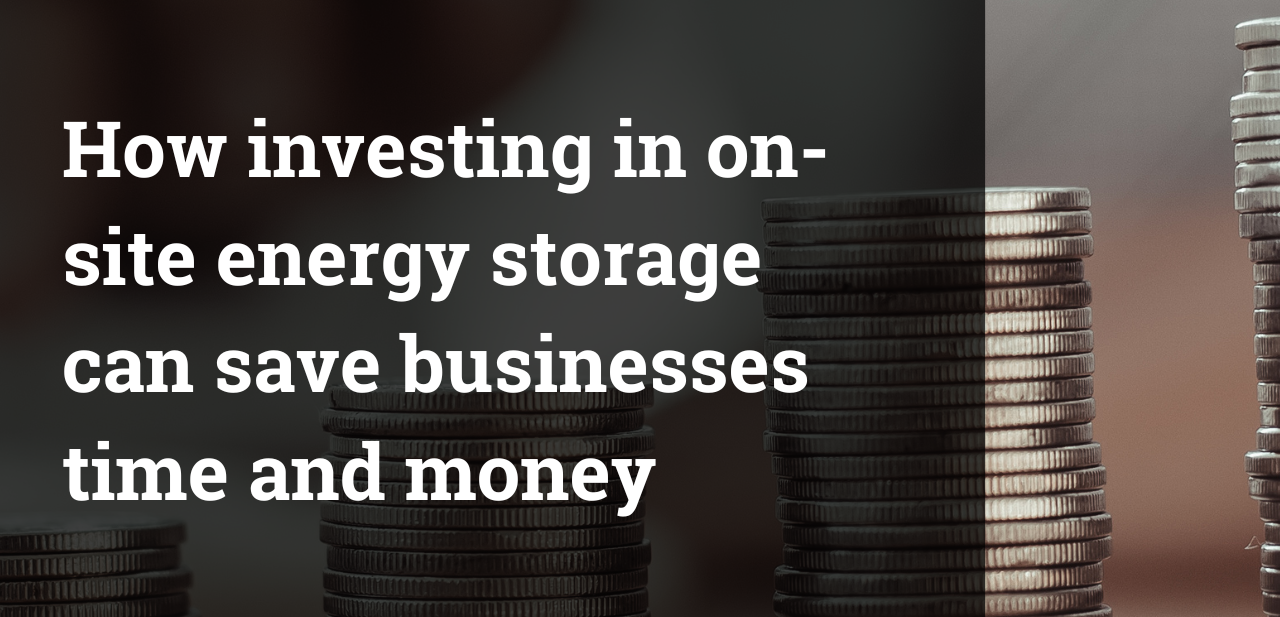
How investing in on-site energy storage can save businesses time and money
Alex Hunter is CEO of Sherwood Power. Here, he explains how businesses can save money and time by investing in onsite battery storage for renewable energy.
As businesses grapple with escalating energy costs – UK electricity is now the most expensive in Europe – and a pressing need to transition to sustainable practices, the question arises: can investing in onsite renewable energy storage save businesses money and time? The short answer is ‘yes’.
Generating renewable energy within your business is – fortunately – fairly straightforward nowadays. Businesses can install solar panels on their roofs, or invest in other forms of renewable energy generation like biofuel generators or wind turbines. By also installing energy storage onsite, businesses can make sure they have access to the electricity they produce whenever they need it (and not just on a sunny or windy day).
To understand how this investment can save businesses money and time, it’s important to understand the inefficiencies and costs embedded in our current energy system. The first thing to consider is the cost structure of electricity. Around 15% of the cost of electricity comes from something called transmission losses. This is the cost incurred in moving electricity from large central power stations, through transmission and distribution wires, to the end user. By generating electricity on-site, businesses can effectively eliminate this loss, translating into direct cost savings.
There are also indirect costs that get added to businesses’ electricity bills, which typically represent about 50% of the total bill. These include various levies and taxes, such as the Climate Change Levy, aimed at making the grid greener. While these are well-intentioned, they significantly inflate electricity costs. For context, three years ago, electricity was trading at around 11-pence per kilowatt-hour. It’s now at a minimum of 30-pence per kilowatt-hour, half of which is taxes and levies.
By installing on-site generation sources like solar panels, businesses can generate electricity at a much lower cost – usually between 7 and 10-pence per kilowatt-hour. This is where battery storage becomes a game changer. If a business installs more solar panels than it needs to power its operations, any excess energy produced can be stored in batteries. This stored energy can then be used at a later time (for example, at night, or on cloudy days, or during a period of increased activity) instead of drawing more expensive power from the grid. This leads to significant cost reductions – typically we save our clients about 30% of their normal electricity costs.
This model is not just about immediate savings; it’s a strategic decision for the future. With a power purchase agreement, businesses can also benefit from fixed electricity prices for any electricity they do draw from the National Grid, insulating themselves against the spiralling energy costs forecasted by Ofgem.
Where installing renewable energy storage onsite can save a business time, is when it needs to increase its energy capacity. We had a client that needed to increase the capacity at one of their sites, from 1,500 to 11,000 kilowatt-hours. To get this increase from the National Grid would require a major infrastructure upgrade by the local distribution network operator, involving laying new cables over long distances, with costs running into tens of millions. Such upgrades also face significant backlogs, meaning a business might have to delay any planned expansion.
On-site energy storage circumvents these challenges. By generating and storing electricity on-site, businesses can meet their increased energy needs without waiting for grid upgrades. This is not only cost-effective but also aligns with the urgent need for sustainability. For energy-intensive companies or companies with ambitious net-zero goals, on-site energy storage offers a viable and timely solution.
In summary, on-site energy storage presents a compelling case for businesses. It’s a financially savvy move that reduces dependence on the grid, cuts down on transmission losses and levies, and offers a more sustainable and resilient energy solution. Investing in this technology is not just a cost-saving measure; it’s a strategic decision that positions businesses for a sustainable and economically sound future.
